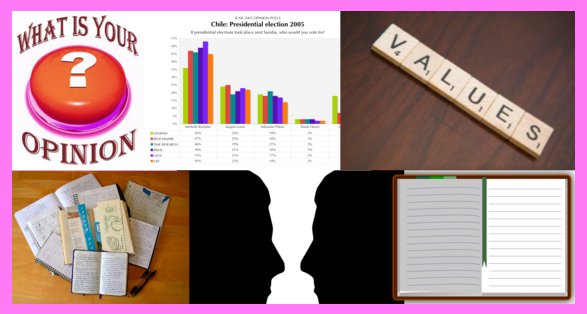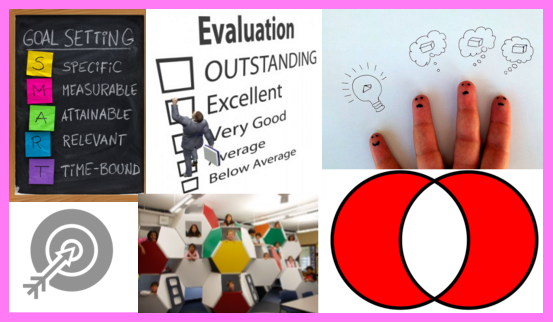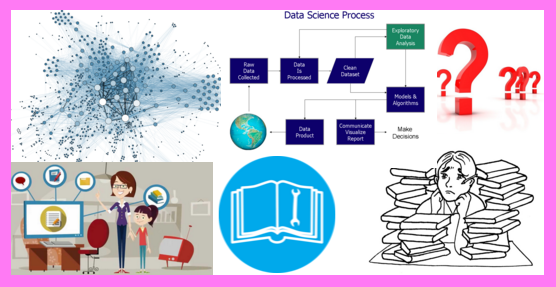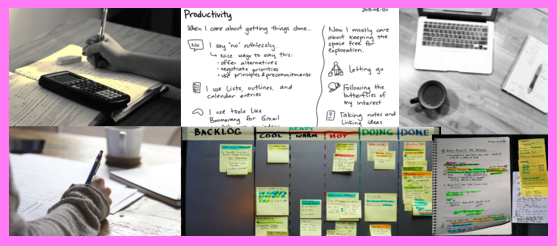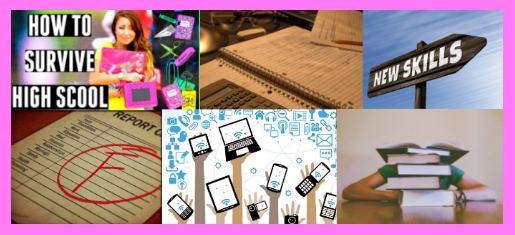


At project start, make sure students are on the right track:
- Help students brainstorm next steps (such as research plans) prior to beginning those processes
- Hold early private meetings with teams while the rest work on other assignments (ex: background reading assignment) to vet and give feedback on their next steps and research questions
- Require deliverables with early work sessions to make sure students are making progress and gaining momentum
- Provide milestones, benchmarks and templates to support students in managing projects
Tailor grouping strategies to project needs:
- Vary out grouping methods: student choice, teacher choice, random draw, etc
- Aim for heterogeneous groups that team up students who are advanced with students who struggle
- Grouping friends together works well with projects that require a lot of work outside class time
- If a project requires a lot of different skills, may aim to form teams that include students who have those skills as a whole when combined in teams
- Mixed method – students choose pairs and then teacher chooses which pairs to combine into teams of 4
- Make grouping appear random even when it is actually very deliberate
- Expert -> jigsaw teams – expert teams become very verses in 1 topic and then jigsaw teams are formed to include one of each type of expert
- Use knowledge of students to create balanced teams
- Sometimes when students choose their own teams end up with several strong teams and several unfocused teams
- Could make students apply to be on teams
- Have students conduct a team inventory of their skills and compare that to the skills needed to complete the project – if there is a mismatch they can lobby to switch team members to better align their team’s skills to the project
- Fake Autonomy – group all students into 3-4 colors. Students who should not work together share the same color. Ask students to form teams that include one student of each color
- Can have students submit 1st and 2nd choice for partners and try to honor their requires while forming balanced teams
- Can have students rank their interests from a list of topics and form teams based on common interests
Plan how to accommodate the needs of diverse students
- Plan in remediation time for students who don’t get it the first couple times
- Have students develop a portfolio that crosses projects so they can access resources throughout the year
- Use knowledge of students to provide different types / levels of support to different students
- Students can get help from teachers, other students, the library, the internet, etc.
- Try to allow for time for students to work with their friends or work on a topic they are interested in
- For more on differentiating for various needs, see this article: Clustering student needs for more efficient planning
Intervene with students who are not carrying their own weight:
- Sometimes let teams go through the firing process and then the student needs to work alone. Or that students can produce a body of work and apply for a rehire from another team.
- For teams that complain about team members not working, facilitate a meeting to renegotiate and tighten timelines. Add more details to timelines including action item descriptions, action item owners, and specific deadlines.
- Inform parents when their child is missing checkpoints and brainstorm together how to improve students’ project and self management skills.
- Have individuals and teams reflect on group processes so they can become more aware and communicate to each other and the teacher about their group concerns and problems.
- Brainstorm with teams who are stuck or off task on ways to become more motivated and focused.
Keep track of each group’s progress
- Move a lot! Use the proximity effect (location matters more than content) to coach students working in teams
- Set clear benchmarks and deadlines and have quick touch-in meetings to check on teams’ progress and answer questions and concerns
- Let students complete a project planning form and then have a review meeting around that form.
- Use checklists or 3×5 cards to record group observations
- Instruct teams to maintain group folders that include all their logs and product artifacts.
Make sure groups keep track of their own progress
- Instruct groups to meet and record who attended the meeting, what was accomplished, the meeting agenda, data, location
Keep public records of group progress:
- Maintain a public accountability chart that shoes what benchmarks teams have completed – make this a graphic display that everyone can see
- Allow time at the start and end of work days to set and track team goals
The Internet is only one information resources. Students often need help to use it efficiently
- Use school librarian as a project partner
- Provide students with a starter list of helpful websites
- Teach students how to analyze the content of websites and evaluate whether or not they possess the prerequisite knowledge to understanding the web content
- Teach students how to evaluate the validity and quality of web sources
Technology can be a powerful tool; it can also crash and burn.
- Trial and troubleshoot tech before using it in a project
- Identify people who can help you troubleshoot technology
Don’t use tech blindly. Select tech that enhances student learning
- Select tech that addresses the meat of the project effectively
- Before using a tool ask: What can be accomplished by this tool? Can we do this using simpler tools?
- Allow time to train students how to use selected technology.
- Use tech only when it is appropriate and enhances student learning.
Don’t be afraid to make mistake
- When mistakes are made, model how to fail forward by brainstorming solutions with students
Don’t be afraid of making mid project corrections
- When students are missing essential info, let students know how / when class will get together to fill in the gap
- Rethink timelines if you realize that students can’t meet the original timeline or are ready and willing to do more
- When problems arise, hold a class meeting to debrief the situation and brainstorm and select solutions
- Renegotiate expectations with teams that run into unexpected obstacles – focus new expectations on what’s critical to learn
Debrief project with your class and ask for project feedback
- 2 questions:
- What is of lasting value to the learner as a result of completing this project?
- What is of lasting value to the community as a result of completing this project?
- Show students models of good reflection before they start generating reflective comments.
- Ask students
- what didn’t work and why and possible alternatives?
- what the fell they did well in the project?
- what they feel didn’t go well?
- what grade do they deserve and why?
- are you proud of your end product?
- how could end product be better?
- Could gather feedback on overall project and specific end products on sticky notes
- Keep student and teacher notes on project improvements in a secure place
- Processing time is well worthwhile – set aside time for it
Reflecting on the Driving Question
- Reflect on the driving question to review content and hopefully make long lasting learning connections

Effective (poor) project management can make (break) a project. Students need support developing skills related to self- and project-management. Setting aside time to scaffold these skills and using templates to reinforce / guides these skills will make students more effective at learning within PBL projects.

Preparation Steps
- Analyze standards and create related list of academic learning targets.
- Create project products and expectations. Create an inventory of skills students need to have to be successful in the project.
- Create character learning targets that are skills in the inventory that students may not have yet.
- Design scaffolding and templates for character learning targets.
- Select and troubleshoot technology that advances learning
Early Implementation Steps
- Set aside time in projects to scaffold character learning targets.
- Provide feedback on templates that scaffold project and self management process in touch-in meetings
- Provide opportunities for students to set and track their goals throughout the project
- Facilitate a post-project reflection discussion to gather feedback on what worked and alternatives to problems
- Use variety of grouping methods that enhance project goals
- Select and use technology that advances student learning; scaffold the tech
- Intervene / support teams / individual students who are struggling
Advanced Implementation Steps
- Ask upperclassmen to coach / mentor students in project management skills
- Ask experienced students to design their own project planning forms
- Use tech to update group accountability charts in real time

- PBL articles
- Classroom Management articles
- Collaboration articles
- 21st Century skills articles
- Clustering student needs for more efficient planning



